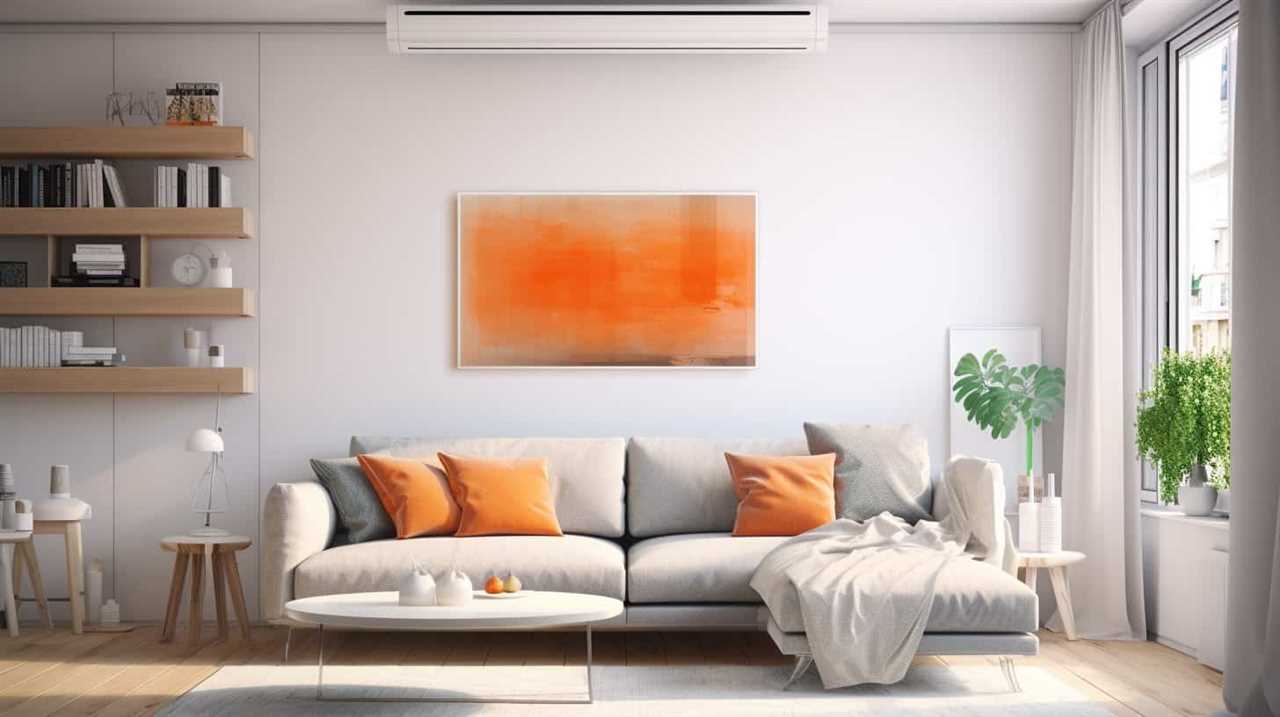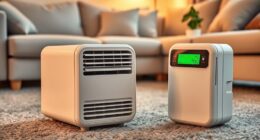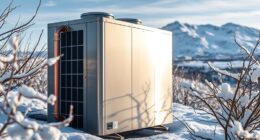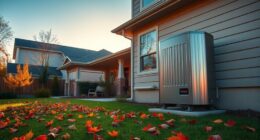Did you know that heat pumps have the potential to lower your energy consumption by as much as 50% when compared to conventional heating systems?
In this article, we will share four essential tactics for maximizing the energy efficiency of your heat pump.
We’ll explore how to understand efficiency ratings, properly size and install your unit, implement smart thermostat controls, and perform regular maintenance.
With these strategies, you can save money on your energy bills while keeping your home comfortable all year round.
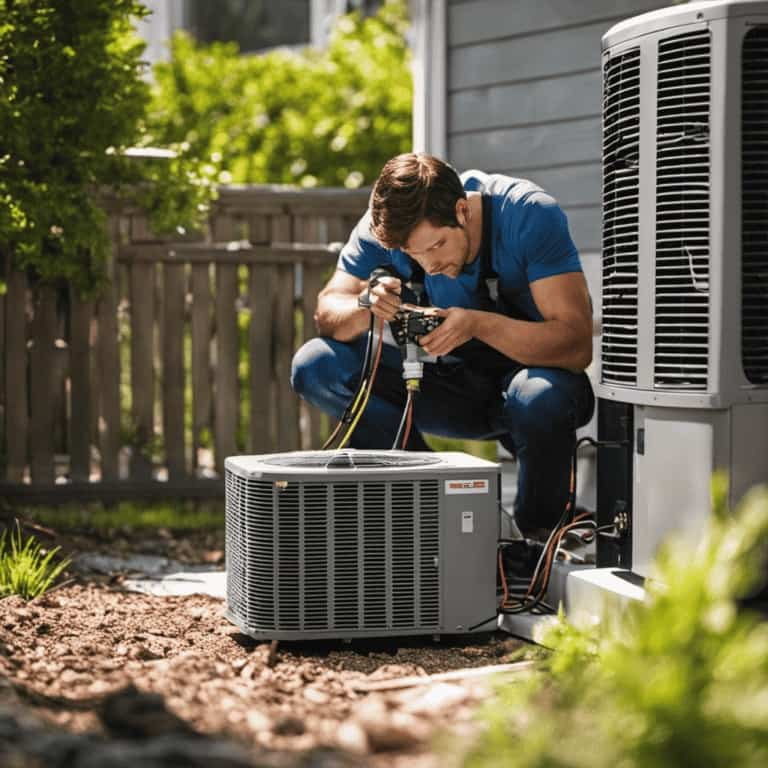
Key Takeaways
- Heat pumps can reduce energy usage by up to 50% compared to traditional heating systems.
- Proper sizing and installation are crucial for optimal performance.
- Smart thermostat controls offer energy-saving features and remote temperature control.
- Regular maintenance and cleaning procedures are necessary to keep heat pumps running smoothly.
Understanding Heat Pump Efficiency Ratings
We need to understand the different heat pump efficiency ratings to make informed decisions about energy-efficient heating systems.
With recent heat pump technology advancements, it’s essential to stay updated on the latest efficiency ratings. These ratings provide valuable information about a heat pump’s performance and energy consumption.
One important factor to consider is the Seasonal Energy Efficiency Ratio (SEER), which measures the cooling efficiency of the heat pump.
Another rating to consider is the Heating Seasonal Performance Factor (HSPF), which quantifies the heating efficiency.
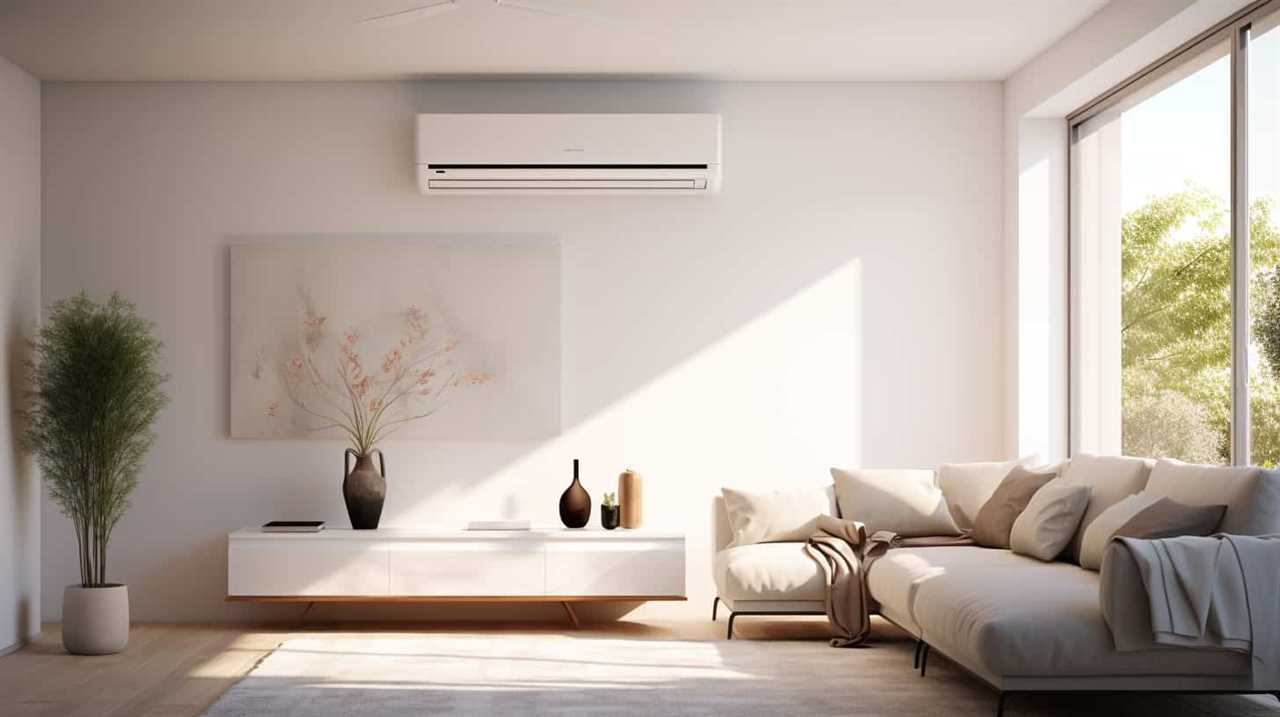
It’s also crucial to consider the impact of climate on heat pump efficiency. Warmer climates may benefit from higher SEER ratings, while colder climates require a higher HSPF rating.
Proper Sizing and Installation for Optimal Performance
To ensure optimal performance, it’s crucial to properly size and install your heat pump. Sizing considerations play a significant role in determining the efficiency and effectiveness of your system.
A heat pump that’s too small will struggle to meet your heating and cooling needs, resulting in reduced comfort and higher energy bills. On the other hand, an oversized heat pump will cycle on and off frequently, wasting energy and causing unnecessary wear and tear.
It’s essential to consult with a professional to accurately determine the right size for your home. Additionally, proper installation is equally important. Ensure that your heat pump is installed by a qualified technician who follows manufacturer guidelines and best practices.

This will help optimize performance, energy efficiency, and longevity of your heat pump system.
Implementing Smart Thermostat Controls
How can we effectively implement smart thermostat controls for energy-efficient heat pumps?
Smart thermostat controls offer energy saving features and the ability to remotely control the temperature of your heat pump.
To implement these controls, start by choosing a smart thermostat that’s compatible with your heat pump system. Install the thermostat according to the manufacturer’s instructions, ensuring that it’s placed in a location that accurately measures the temperature of the room.

Connect the thermostat to your home’s Wi-Fi network and download the accompanying app to your smartphone or tablet. Use the app to set up a schedule for your heat pump, adjusting the temperature based on when you’re home or away.
Take advantage of the remote temperature control feature to adjust the temperature from anywhere, ensuring optimal comfort and energy efficiency.
Regular Maintenance and Cleaning Procedures
What are the regular maintenance and cleaning procedures for ensuring the optimal performance of our energy-efficient heat pumps?
To keep our heat pumps running smoothly and efficiently, it’s important to follow a regular maintenance schedule. Here are some essential maintenance and cleaning procedures to consider:
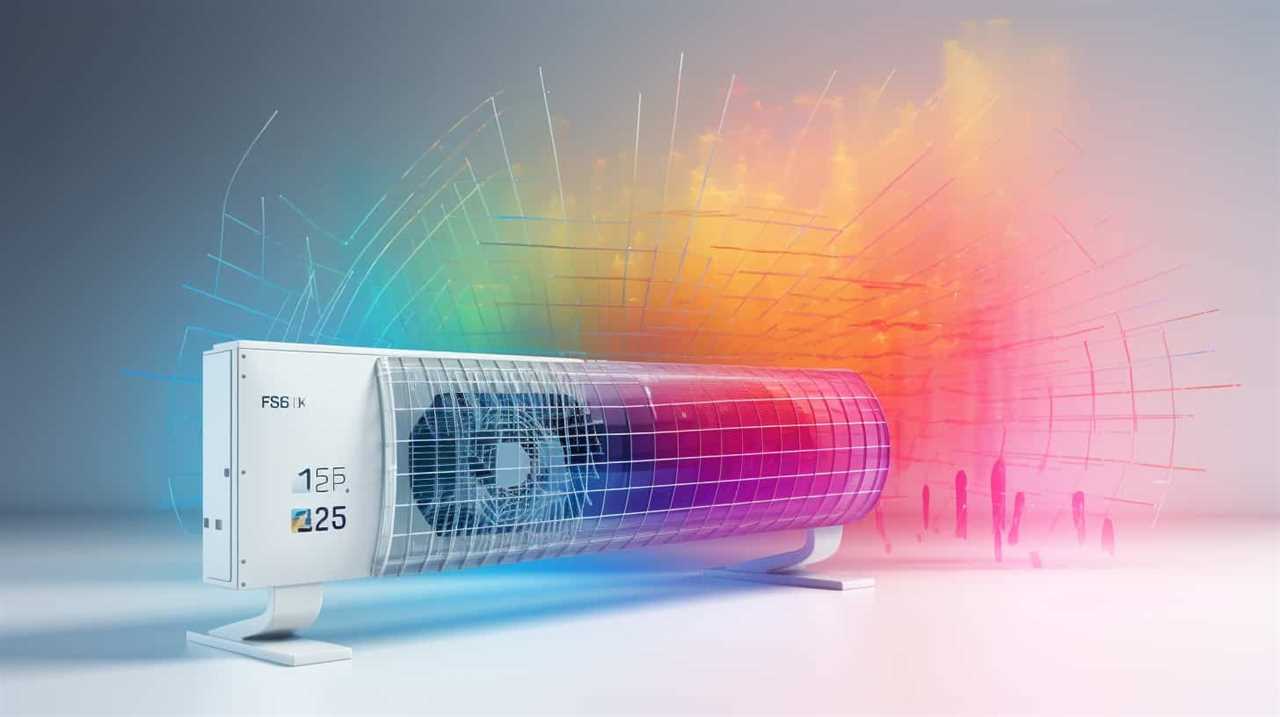
- Clean or replace air filters regularly to ensure proper airflow and prevent dust buildup.
- Check and clean the outdoor unit regularly to remove any debris or vegetation that may obstruct airflow.
- Schedule annual professional maintenance to inspect and tune up the system, identifying any potential issues before they become major problems.
In addition to regular maintenance, knowing some troubleshooting techniques can help address common issues. If the heat pump isn’t heating or cooling properly, check the thermostat settings, ensure there’s power to the unit, and inspect the circuit breaker.
Optimizing Heat Pump Settings for Energy Savings
By adjusting our heat pump settings, we can maximize energy savings without sacrificing comfort.
One important setting to consider is the heat pump temperature. Setting the temperature too high can lead to unnecessary energy consumption, while setting it too low can result in discomfort. It’s recommended to keep the temperature at a moderate level, around 68-72 degrees Fahrenheit in winter and 72-76 degrees Fahrenheit in summer.
Another way to optimize energy savings is through energy-efficient programming. Take advantage of programmable thermostats to set different temperatures for different times of the day. For example, during the day when no one is home, set the temperature slightly lower to save energy.
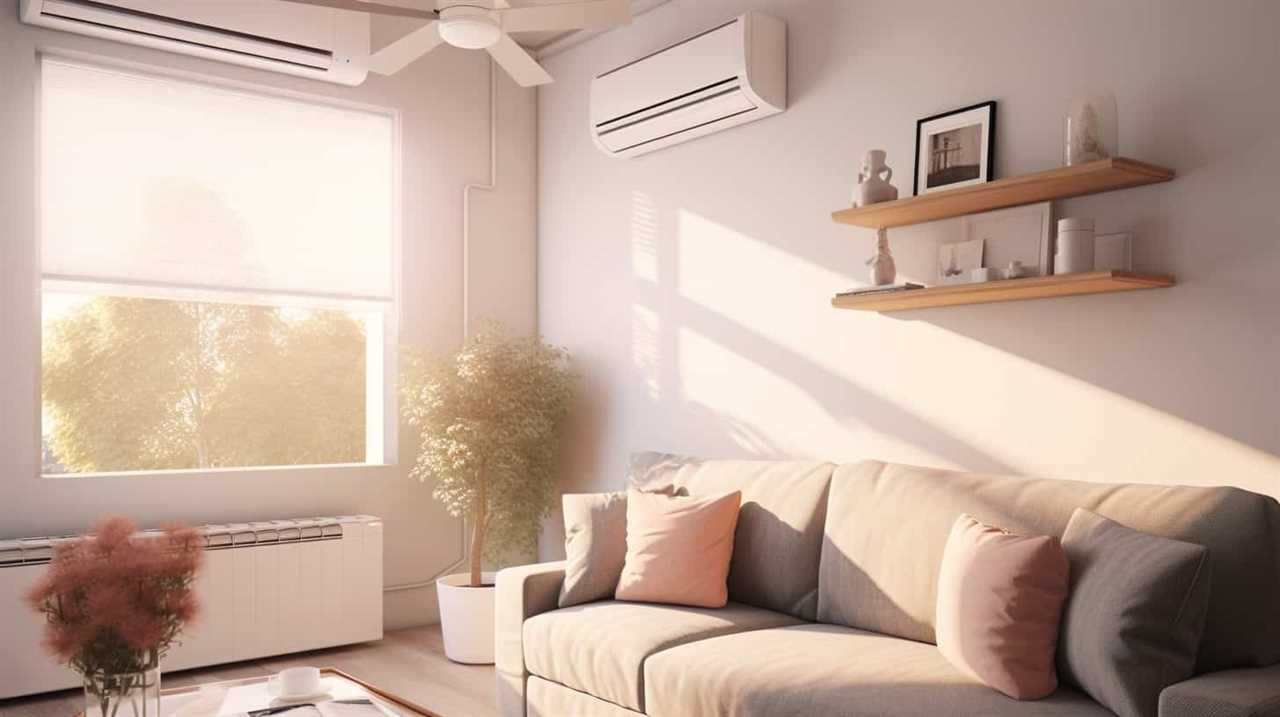
Frequently Asked Questions
Can a Heat Pump Be Used to Cool a Home in Addition to Heating It?
Yes, a heat pump can be used to cool a home in addition to heating it. The cooling efficiency of a heat pump is beneficial, as it allows for both heating and cooling functions in one system.
Is It Possible to Use a Heat Pump in Extremely Cold Climates?
Yes, it is possible to use a heat pump in extremely cold climates. Heat pump efficiency can be maintained by implementing proper insulation, using a backup heat source, optimizing defrost cycles, and selecting a heat pump designed for cold weather.
Are There Any Government Incentives or Rebates Available for Installing an Energy-Efficient Heat Pump?
Yes, there are government incentives and rebates available for installing energy-efficient heat pumps. They can help you save money while reducing your carbon footprint. Take advantage of these opportunities and make the switch today!
What Is the Average Lifespan of a Heat Pump?
The average lifespan of a heat pump depends on its maintenance requirements. Regular maintenance can help extend the lifespan of a heat pump, ensuring it operates efficiently and effectively for many years.
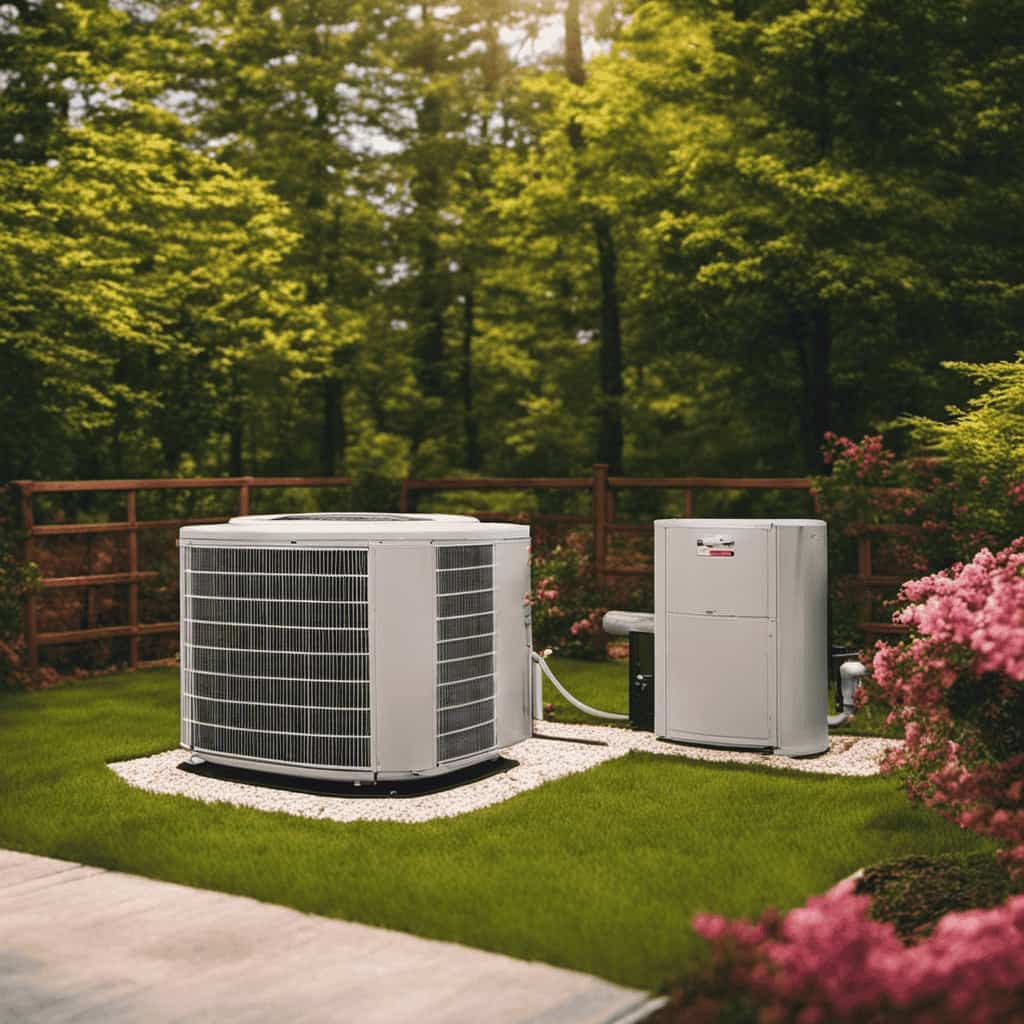
Can a Heat Pump Be Installed in Any Type of Home or Are There Specific Requirements?
Sure, a heat pump can be installed in any type of home. However, there are specific requirements to consider, such as the size of the space, insulation, and the availability of a suitable outdoor unit location.
Conclusion
So there you have it, folks. Just four simple tactics to ensure that your heat pump is energy-efficient. It’s almost too easy, isn’t it?
Understanding efficiency ratings, proper sizing and installation, smart thermostat controls, and regular maintenance are all it takes to keep those energy bills low. Who knew saving money could be this straightforward?
So go ahead, optimize those settings and start enjoying the sweet rhythm of energy savings.
